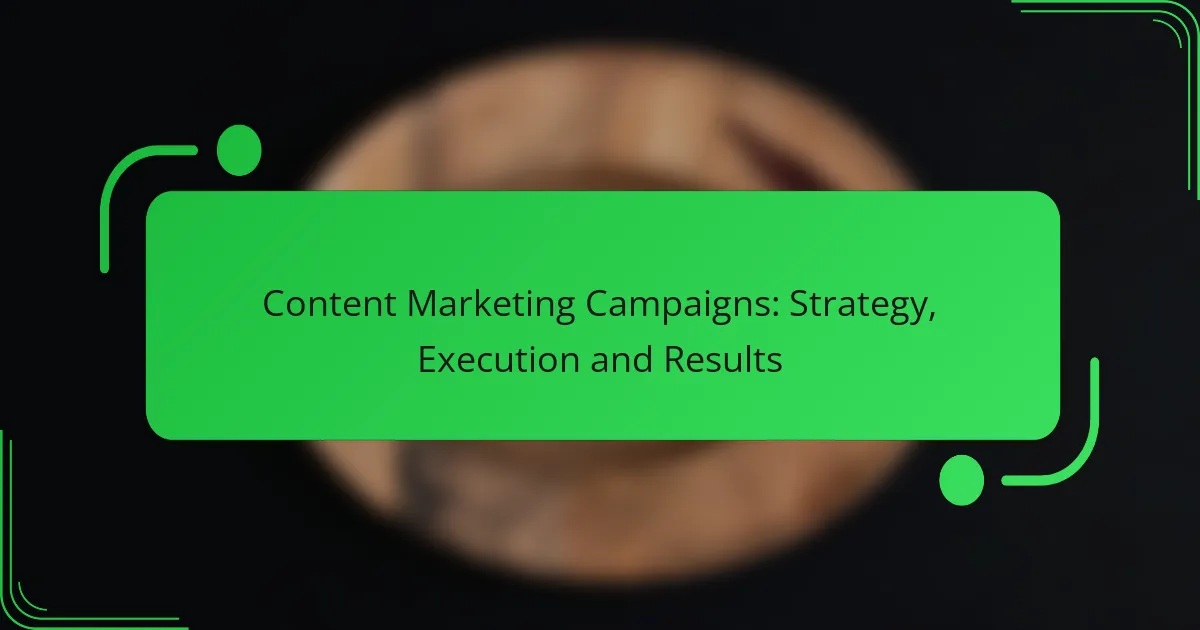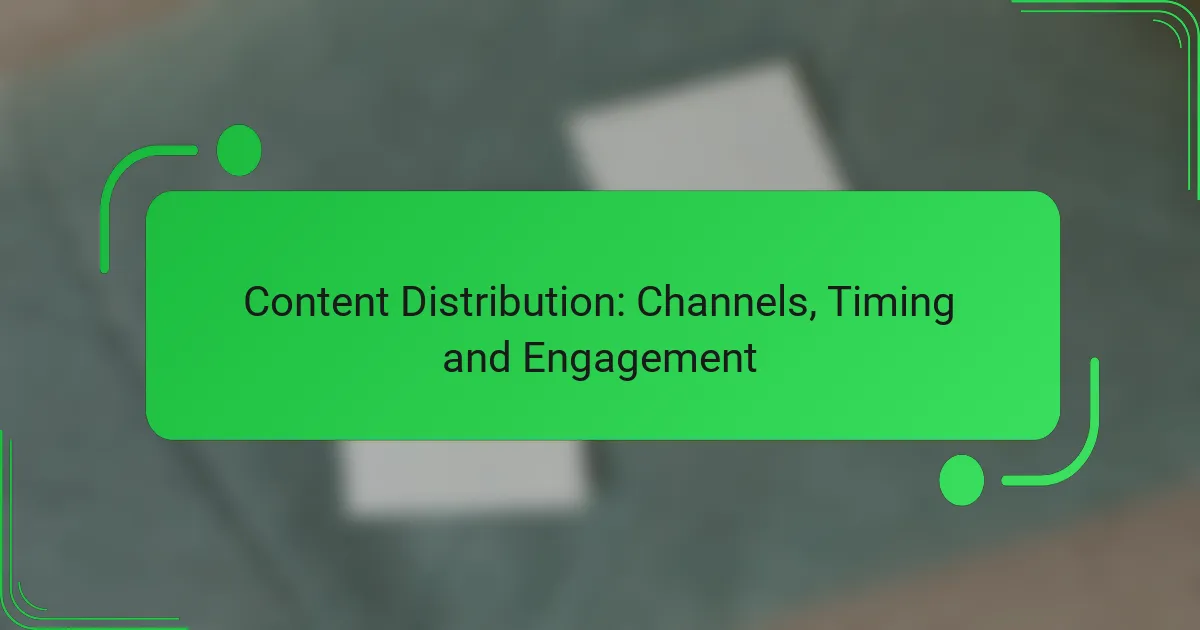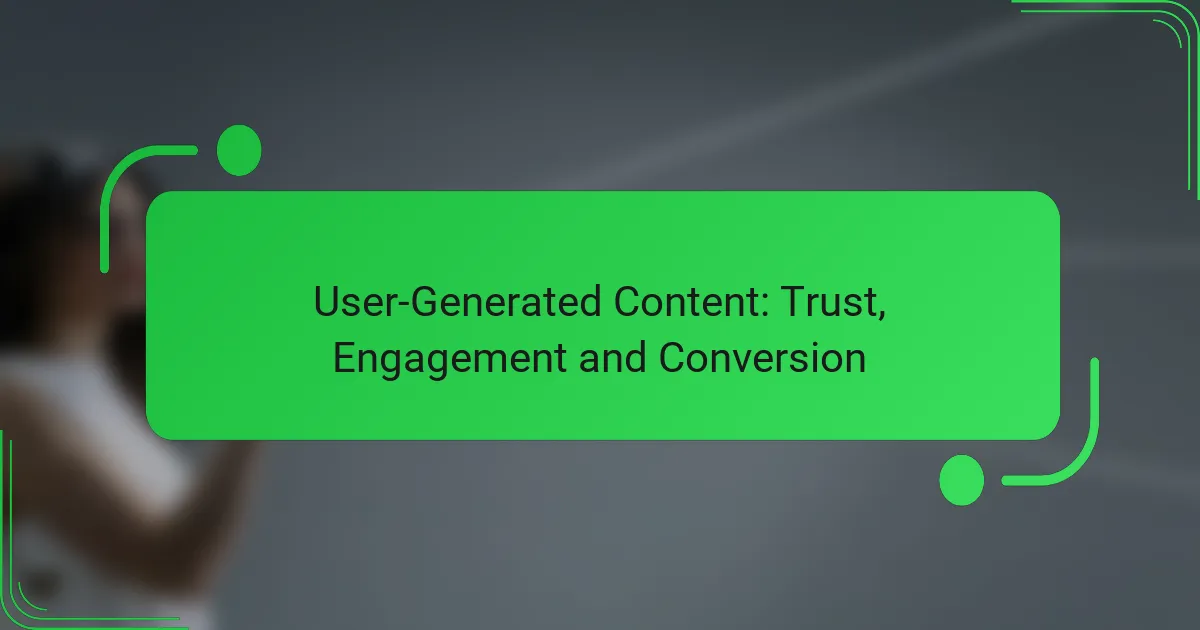Content marketing campaigns are essential for engaging audiences and achieving business goals. By understanding your target market, setting clear objectives, and selecting appropriate content formats, you can create impactful strategies. Successful execution requires meticulous planning and targeted distribution, while measuring results through key performance metrics ensures continuous improvement and effectiveness.
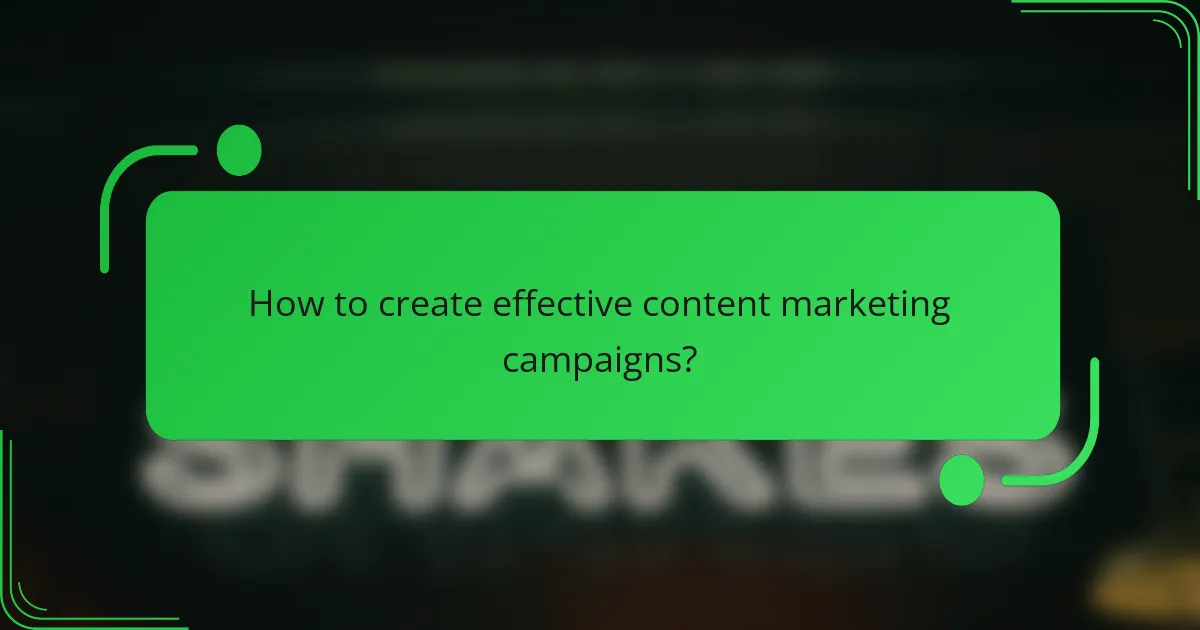
How to create effective content marketing campaigns?
Creating effective content marketing campaigns involves understanding your audience, setting clear objectives, and choosing the right formats. A well-structured approach ensures that your content resonates with your target market and drives desired results.
Define target audience
Identifying your target audience is crucial for any content marketing campaign. Understand their demographics, interests, and pain points to tailor your content effectively. Use tools like surveys or social media analytics to gather insights about your audience.
Consider creating buyer personas that represent your ideal customers. This helps in visualizing who you are targeting and can guide your content creation process.
Set clear objectives
Establishing clear objectives is essential for measuring the success of your content marketing efforts. Objectives should be specific, measurable, achievable, relevant, and time-bound (SMART). For instance, you might aim to increase website traffic by a certain percentage within a specific timeframe.
Common objectives include generating leads, boosting brand awareness, or improving customer engagement. Align your content strategy with these goals to ensure focused execution.
Choose content formats
Selecting the right content formats is key to engaging your audience effectively. Options include blog posts, videos, infographics, podcasts, and social media posts. Each format has its strengths and can cater to different audience preferences.
For example, if your audience prefers visual content, infographics or videos may be more effective than lengthy articles. Experiment with various formats to see which resonates best with your target market.
Develop a content calendar
A content calendar helps organize your content marketing efforts and ensures consistent delivery. Plan your content topics, formats, and publication dates in advance. This not only keeps your team on track but also allows for timely adjustments based on audience feedback or market trends.
Include key dates, such as holidays or industry events, in your calendar to capitalize on relevant opportunities. Regularly review and update the calendar to stay aligned with your objectives.
Allocate budget and resources
Determining your budget and resources is vital for executing your content marketing campaign effectively. Consider costs associated with content creation, distribution, and promotion. Allocate funds based on the formats and channels that align with your goals.
Additionally, assess the skills and tools needed for your campaign. Whether hiring freelancers or investing in software, ensure you have the right resources to support your strategy. Regularly review your spending to optimize your budget for maximum impact.
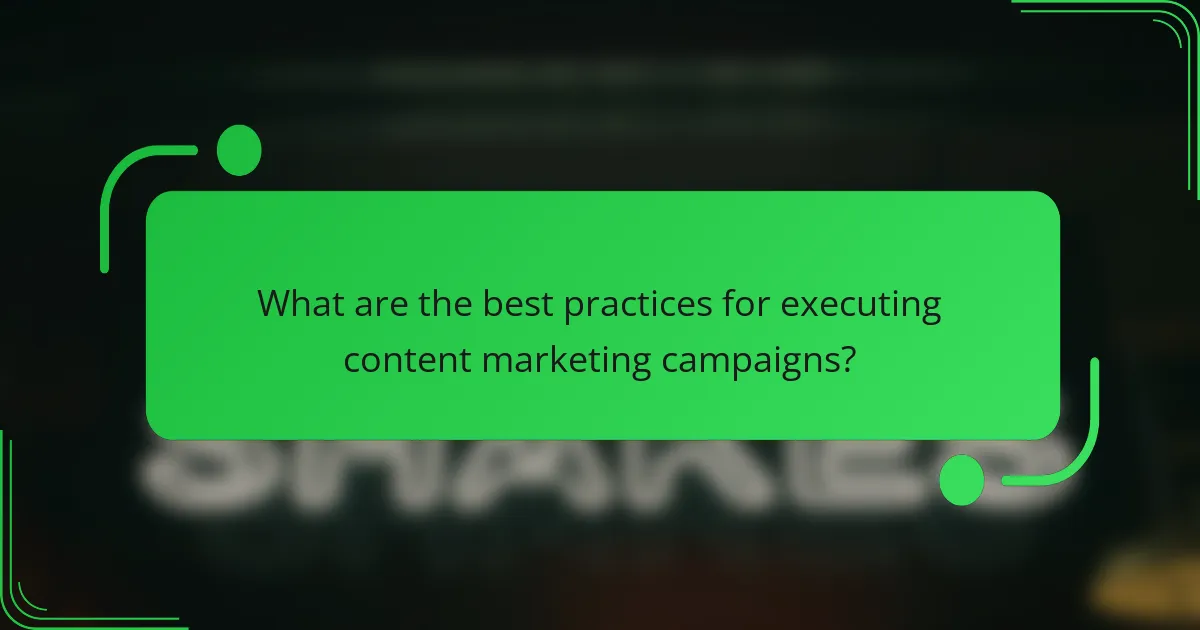
What are the best practices for executing content marketing campaigns?
Executing effective content marketing campaigns involves strategic planning, targeted distribution, and performance measurement. Best practices ensure that your content reaches the right audience and achieves desired results.
Utilize SEO strategies
Incorporating SEO strategies is crucial for enhancing the visibility of your content. Focus on keyword research to identify terms your target audience is searching for, and optimize your content accordingly. Use tools like Google Keyword Planner or SEMrush to find relevant keywords.
Ensure that your content includes these keywords in key areas such as titles, headings, and meta descriptions. Additionally, consider the use of internal and external links to improve your site’s authority and user experience.
Leverage social media platforms
Social media platforms are powerful tools for distributing content and engaging with your audience. Choose platforms that align with your target demographic, such as Instagram for younger audiences or LinkedIn for professionals. Tailor your content format to fit each platform’s strengths, like visuals for Instagram or articles for LinkedIn.
Regularly interact with your followers through comments, shares, and direct messages to build a community around your brand. Use analytics tools to track engagement and adjust your strategy based on what resonates most with your audience.
Incorporate email marketing
Email marketing remains an effective way to nurture leads and maintain customer relationships. Build a segmented email list to send personalized content that addresses the specific interests of different groups. Use engaging subject lines and clear calls to action to improve open and click-through rates.
Consider using automation tools to streamline your campaigns, allowing for timely follow-ups and consistent communication. Monitor metrics such as open rates and conversions to refine your approach over time.
Engage with influencers
Partnering with influencers can amplify your content marketing efforts by reaching their established audiences. Identify influencers within your niche who align with your brand values and have a genuine connection with their followers. Collaborate on content that feels authentic and resonates with both your audiences.
Track the performance of influencer campaigns through engagement metrics and referral traffic to assess their impact. Be mindful of choosing influencers who have a positive reputation to maintain your brand’s credibility.
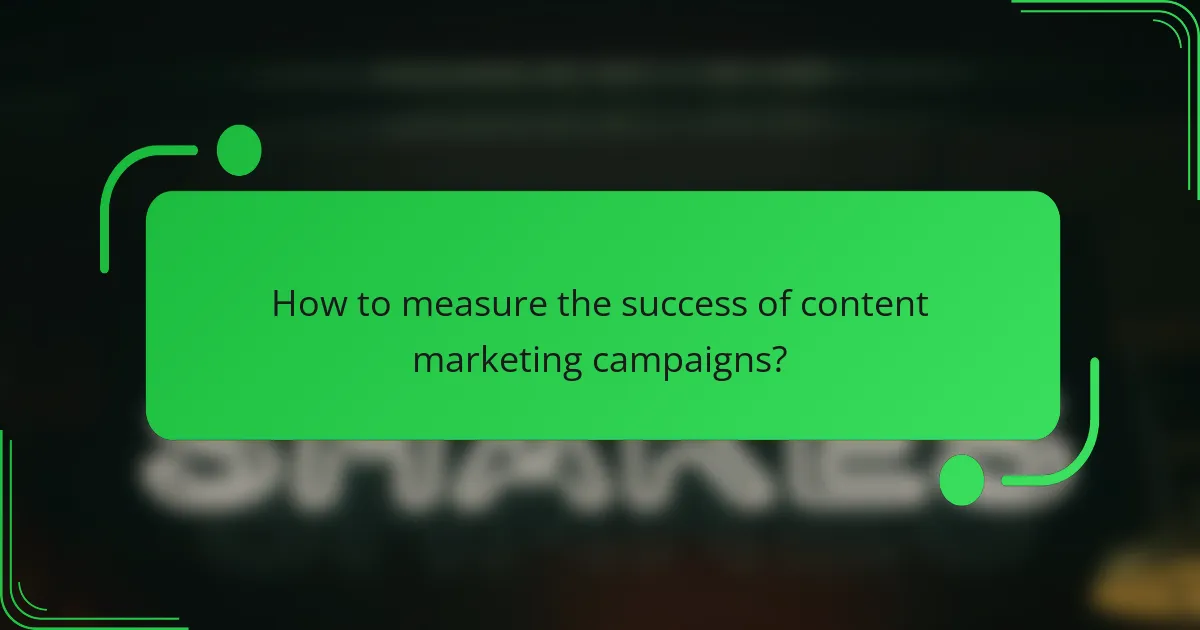
How to measure the success of content marketing campaigns?
Measuring the success of content marketing campaigns involves tracking various metrics that indicate performance and impact. Key areas to focus on include engagement, conversion rates, and the use of analytics tools to gather data.
Track key performance indicators (KPIs)
Identifying and tracking key performance indicators (KPIs) is essential for assessing content marketing success. Common KPIs include website traffic, social media shares, and lead generation. Establish clear benchmarks for each KPI to evaluate progress over time.
For instance, a content campaign might aim for a 20% increase in website traffic within three months. Regularly reviewing these indicators helps in adjusting strategies to meet goals effectively.
Analyze audience engagement
Audience engagement measures how well your content resonates with your target demographic. Metrics such as time spent on page, bounce rate, and comments can provide insights into engagement levels. High engagement often correlates with content that is relevant and valuable to the audience.
Consider using engagement metrics to refine your content strategy. For example, if video content leads to longer viewing times compared to text articles, you might prioritize video production in future campaigns.
Evaluate conversion rates
Conversion rates indicate how effectively your content drives desired actions, such as signing up for a newsletter or making a purchase. To calculate the conversion rate, divide the number of conversions by the total visitors and multiply by 100. A conversion rate of 2-5% is generally considered good in many industries.
Regularly evaluating conversion rates allows you to identify which content types or topics yield the best results. If certain blog posts lead to higher conversions, consider creating more content in that vein.
Use analytics tools like Google Analytics
Analytics tools, such as Google Analytics, provide comprehensive data on user behavior and campaign performance. These tools can track metrics like page views, user demographics, and traffic sources, offering valuable insights into how content is consumed.
Utilize Google Analytics to set up goals and monitor the performance of specific campaigns. This data can guide future content creation and help optimize existing materials for better results.
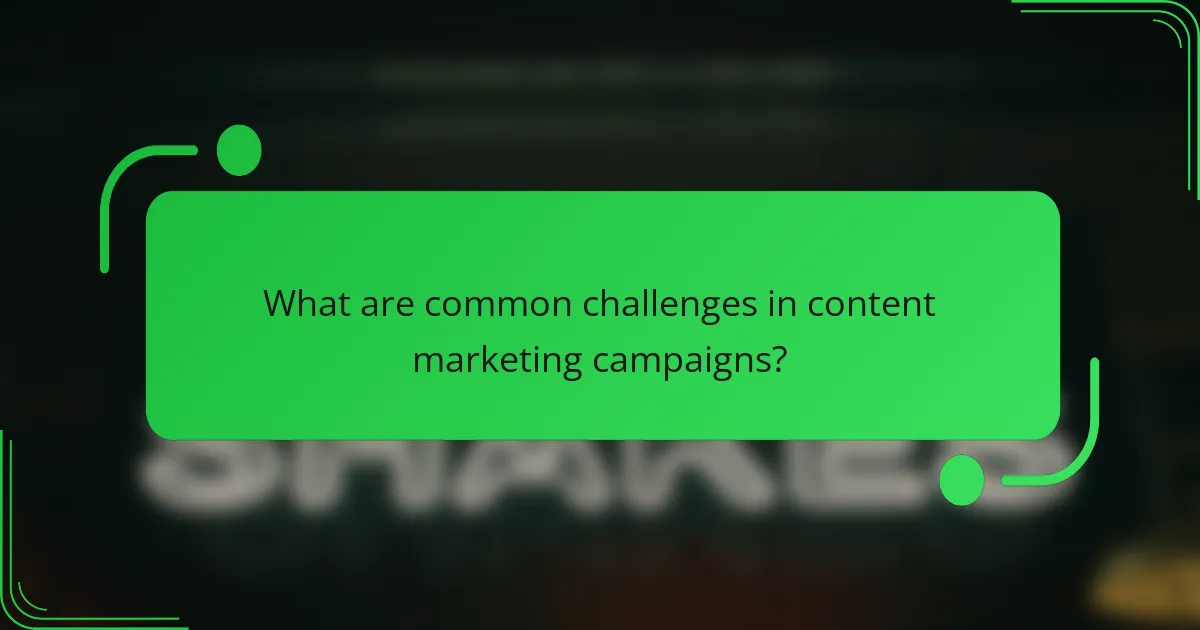
What are common challenges in content marketing campaigns?
Content marketing campaigns often face challenges such as content saturation, maintaining consistency, and adapting to algorithm changes. Addressing these issues is crucial for achieving effective engagement and measurable results.
Content saturation
Content saturation occurs when the market is flooded with similar content, making it difficult for individual pieces to stand out. This can lead to audience fatigue and decreased engagement rates. To combat saturation, focus on unique angles, in-depth analysis, or niche topics that resonate with your target audience.
Consider conducting thorough keyword research to identify less competitive terms that can help your content gain visibility. Additionally, leveraging multimedia formats like videos or infographics can differentiate your content from the competition.
Maintaining consistency
Consistency in content marketing is vital for building brand recognition and trust. This includes regular posting schedules, uniform messaging, and cohesive branding across all platforms. Inconsistent content can confuse your audience and dilute your brand’s impact.
Establish a content calendar to plan and schedule your posts in advance. This will help ensure that you maintain a steady flow of content and adhere to your brand voice. Regularly review your content strategy to align with your goals and audience preferences.
Adapting to algorithm changes
Search engine and social media algorithms frequently change, impacting how content is ranked and displayed. Staying updated on these changes is essential for maintaining visibility and engagement. Failing to adapt can result in decreased traffic and lower conversion rates.
To stay ahead, follow industry news and updates from platforms like Google and Facebook. Regularly analyze your content performance metrics to identify trends and adjust your strategy accordingly. Consider diversifying your distribution channels to mitigate the impact of any single algorithm change.
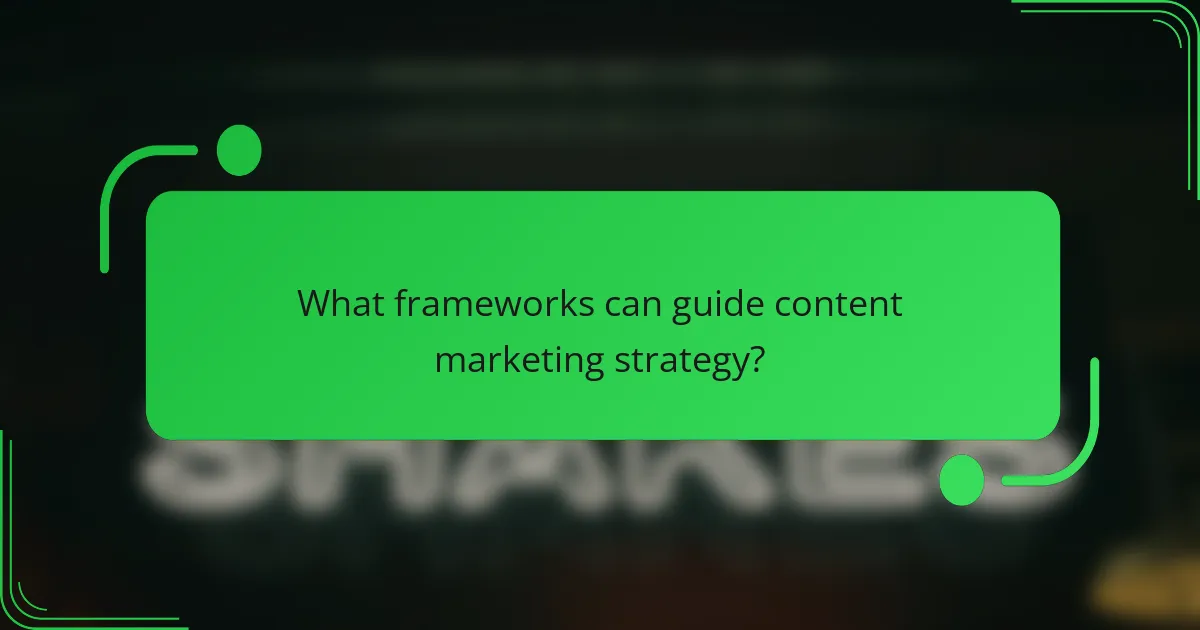
What frameworks can guide content marketing strategy?
Effective content marketing strategies can be guided by several frameworks that help in planning, executing, and measuring campaigns. Key frameworks include the content marketing funnel and buyer persona development, which provide structured approaches to engage target audiences and drive conversions.
Content marketing funnel
The content marketing funnel outlines the stages a potential customer goes through, from awareness to decision-making. It typically consists of three main stages: awareness, consideration, and conversion. Understanding this funnel helps marketers create tailored content that addresses the specific needs of customers at each stage.
At the awareness stage, content should focus on attracting attention through informative blog posts, social media, or videos. During the consideration phase, more detailed resources like case studies or webinars can help nurture leads. Finally, at the conversion stage, targeted offers or product demos can encourage decision-making.
Buyer persona development
Buyer persona development involves creating detailed profiles of ideal customers to inform content marketing strategies. These personas are based on market research and data analysis, capturing demographics, behaviors, and pain points. This process ensures that content resonates with the audience’s specific needs and preferences.
To develop effective buyer personas, gather data through surveys, interviews, and analytics. Aim to create 3-5 distinct personas that represent different segments of your target market. Regularly update these personas as market conditions and customer preferences evolve to keep your content relevant and engaging.
